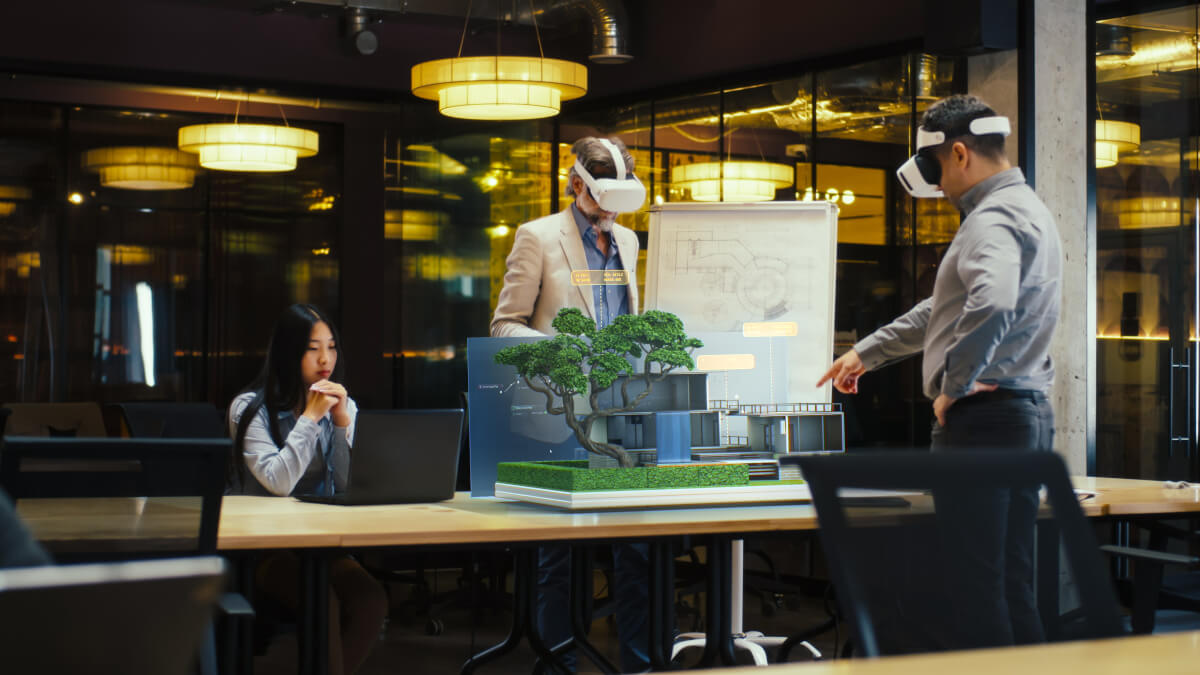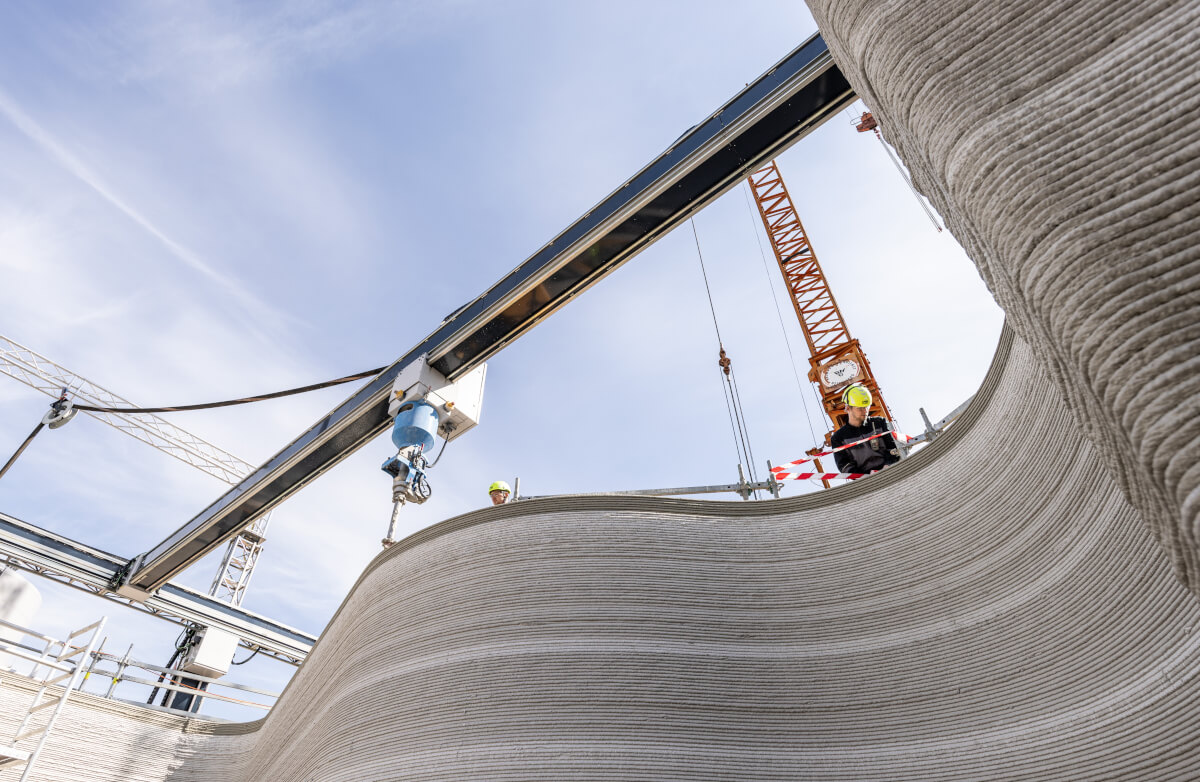
Top 5 Technology Trends for the AEC Industry in 2024
The architecture, engineering, and construction (AEC) sector is changing dramatically in tandem with the unfolding of the digital era. The industry is getting to the stage where it is imperative to constantly embrace technical developments since there are so many new applications for both upcoming and existing technology being developed. In this article, we’ll look at five AEC technology trends that, by 2024, should have a big influence on how we plan, create, and maintain our built environment.
Digital Knowledge Management with Generative AI
The AEC sector is undergoing a change thanks to generative artificial intelligence, or GenAI, which improves information access, streamlines content creation, streamlines design processes, and offers responsive support. This new type of AI will assist us in handling enormous volumes of project data. By providing answers and insights at a pace and quality never before possible, it pushes the limits of architectural and technical innovation.
GenAI, for instance, improves data interoperability and facilitates effective content translation, increasing accessibility to knowledge and information. By organizing large sets of blueprints, pointing out discrepancies, and enabling focused information searches, it also simplifies the generation and administration of copious amounts of project information. GenAI may use data analysis to optimize designs through better planning, reduced errors, and environmentally friendly design techniques. Lastly, by enabling more seamless interactions with sophisticated software tools, it can also enhance user experiences via predictive modeling and natural language processing. These are but a few illustrations of how GenAI may boost productivity, innovation, and sustainability in the AEC industry.
_klein.jpg?width=2064&height=1376&name=Leica_Cyclone_FIELD_360_%26_BLK360_0419_(3)_klein.jpg)
Sensor-Based Information Gathering
The integration of sensors throughout the design, construction, and management phases is transforming how buildings are created and maintained. Sensors provide data, enabling more informed decisions, optimizing construction processes, and ensuring efficient and secure building utilization.
Digital asset management is the most obvious use case for this technology, as IoT sensors allow for operational optimization and predictive maintenance by continuously monitoring building performance. Infrastructure structures have a longer economic service life thanks to structural health monitoring (SHM) technologies. This lowers expenses and leaves a smaller environmental impact. They do, however, also add value during the design and construction stages. In the process of design, sensors such as 3D-laser scanners offer precise and comprehensive spatial site data, facilitating more informed choices and lowering the possibility of planning mistakes. Through real-time resource and condition monitoring, sensors can enhance building processes, resulting in increased efficiency and safety. The architecture, engineering, and construction sectors adopt a more responsive, sustainable, and efficient approach when sensor technology is integrated at different phases of the process.
Model-Based Communication in the Metaverse
Within the AEC sector, digital twins and the Metaverse are changing the way people communicate. These technologies enable improved project outcomes, precise simulations, and more cooperation by generating virtual reproductions of physical assets.
Asset-based digital twins provide highly detailed virtual representations of real-world architecture. They act as the fundamental building blocks of Metaverse immersive experiences. Long before they are constructed, stakeholders can communicate with them and see the infrastructure and buildings in a realistic, detailed way. This integration opens the door for creative design and fresh business concepts in addition to improving project collaboration and decision-making.
Teams can participate in real-time, immersive design and planning sessions in the Metaverse by hosting these complete digital twins, regardless of their physical location. This gives operational planning and project management an entirely new level of complexity. Although it is still in its infancy, this combination of digital twins and the Metaverse represents a revolutionary change in the way clients, business partners, and decision-makers are included in the AEC sector.


Robotics and Large-Scale 3D Printing
In the AEC industry, robotics and 3D printing are leading the way in innovation. With the help of these technologies, complex structures may be built precisely and efficiently, saving money on labor and material waste and creating new opportunities for design and building techniques.
The most notable example of this change is in prefabrication, where intelligent fabrication techniques, such as industrial robots and self-driving transit systems, are completely transforming the logistics and manufacturing processes. Building activities that were formerly completed by construction people are being replaced by increasingly complex building machinery, and additive manufacturing systems are now able to print entire houses on construction sites. To ensure the safety, value, and quality of buildings during the operation phase, autonomous mobile solutions are being developed for building maintenance and cleaning.
Digitally Supported Sustainability
In 2024, the trend toward environmentally friendly and sustainable building will continue, helped along by digital tools. Modern methods of construction (MMC), sophisticated building materials, and smart building technology can all help reduce carbon emissions throughout the building and operation phases.
Smart building systems are integrated into building designs and use sensors, artificial intelligence (AI), and cloud-based platforms to monitor water usage, control building climates effectively, and optimize energy use. These features result in significant energy savings and a smaller environmental impact.
The creation of environmentally friendly construction methods that enhance the overall sustainability of the structure in addition to being energy-efficient is another factor. During construction, waste can be minimized and reused at the conclusion of the project’s life cycle thanks to the exact planning and resource optimization made possible by BIM software. In a similar vein, MMC techniques such as multimaterial composites can be precisely modelled to reduce waste and construction times, leading to lower emissions during the building stage.

Today’s Tech, Tomorrow’s Buildings
These five trends indicate how professionals can improve productivity and creativity while simultaneously making a positive impact on a built environment that is more robust and sustainable. 2024 seems to be a year filled with amazing innovations and advancements.
Experience the superior features of Allplan 2024 by downloading a free trial version today for 14 days and join the digital race to surpass competitors in the industry.
Source: blog.allplan.com – Top 5 Technology Trends for the AEC Industry in 2024
ALLPLAN is part of the Nemetschek Group.
-
Singapore: ALLPLAN Software Singapore PTE. LTD. |
4 Battery Road #25-01, Bank of China Building
49908 Singapore - customercare.singapore@allplan.com

